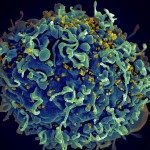Cliquez pour voir le graph
Connexions
Membres

Lisa Chakrabarti
Chef(fe) de Groupe
Responsable
Anciens Membres
2000
2000
Name
Position
2015
2019
Daniela Benati
Post-Doc
2015
2019
Alexandre Nouel
Post-doc
2015
2019
Moran Galperin
Post-doc
2015
2019
Madhura Mukhopadhyay
PhD Student
2015
2019
Mathieu Claireaux
PhD Student
2015
2019
Mandar Patgaonkar
Post-Doc
2020
2022
Jérôme Kervevan
Post-doc
2017
2022
Rémy Robinot
Post-doc
2019
2020
Xian Tang
Visiting scientist
2018
2022
Stacy Gellenoncourt
PhD Student
2022
2024
Barbara de Faria da Fonseca
Post-Doc









